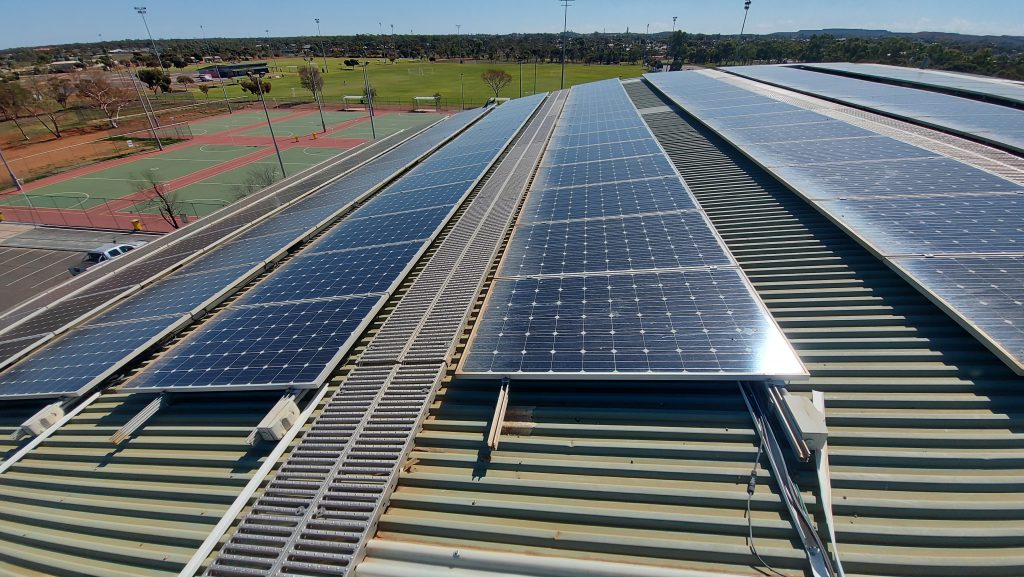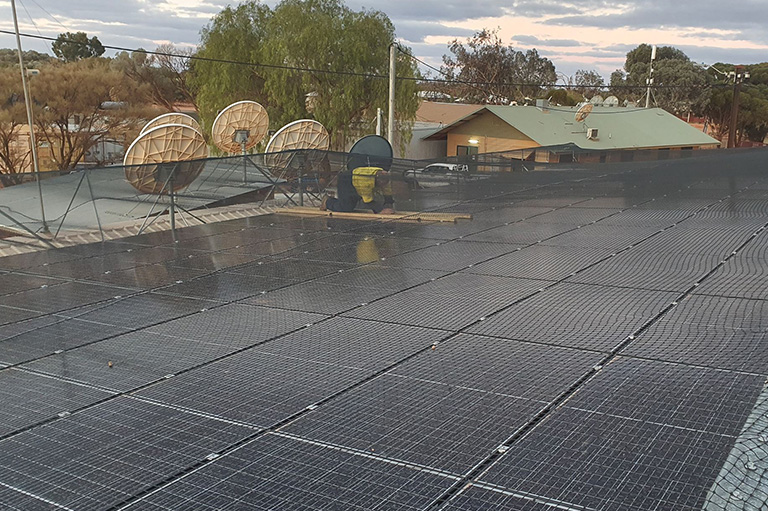Solar Energy
Solar Energy is used commonly to generate electricity via solar photovoltaic (PV) panels. Most people are familiar with the benefits of solar PV. Rooftop solar PV installations are applied to many residential and commercial buildings.
We use solar energy to assist in reducing the grid supplied energy to residential and commercial buildings. Similarly, we use solar PV coupled with battery storage to assist with load shifting and off grid buildings. The more efficient we make the geothermal heating and cooling in a building the less solar generated electricity we need to run a system.
By optimising overall air conditioning and hot water production, we can operate the building for longer with fewer solar panels and less battery storage than conventional systems.
Solar PV
Solar PV has been promoted by successive Australian Federal governments via a Renewable Energy Certificates (RECs) Scheme which considerably reduces the cost of solar energy for home and business owners. It is now a widely accepted way of reducing energy bills especially for daytime power usage, when the sun is shining. The extent of benefit from solar PV is based on location, with some places being a lot sunnier than others. The time of energy use is important to gauge overall benefit, with daytime use of energy being best offset by daytime solar.
Increasingly, we are seeing battery storage being coupled with solar PV systems for load shifting (use of daytime energy in the peak load evenings). This is an aspect of solar power systems that is becoming more relevant as battery storage costs reduce over time.


Commercial scale solar PV
Commercial scale solar PV is very popular. Many business realise that with high daytime energy usage, solar power can be used directly without need for any feedback to the electricity grid. This is when solar power works best for a commercial enterprise. Shopping centres, factories, aquatic centres and office buildings can benefit substantially from solar PV and achieve payback periods for installation cost of less than 5 years in many cases.
Undertaking an energy load analysis is an important part of design if optimally sized systems are to be installed. The feed in tariff is also very important.
This is how much an electricity retailer will pay for solar energy derived electricity from its clients, on the rooves of factories, shopping centre carparks and office rooftops etc. If this is high, there can be benefit in generating more electricity than a building uses. If the feed in tariff is low, there may be limited benefit in oversizing a building.
Large utility scale solar PV
Large utility scale solar PV is also becoming very common. Solar farms serving large communities are being installed Australia wide, with many being owned by prominent energy industry utility companies.
Emerging in the precinct energy market are large scale roof top solar arrays that can be managed by energy utilities and coupled with behind the meter or community battery storage systems.


Off-Grid Solar PV
This is an emerging sector, as renewable energy is leveraged further in remote communities and in areas that have limited grid energy supply. We utilise solar PV and battery storage systems to assist in creating off-grid environments.
It is very difficult to cater for 100% of energy loads with renewable energy all year round. Solar PV in mid winter can lose over 90% of its energy generating capacity on cloudy, rainy days. Other forms of energy generation must be utilised during these times.
We view off grid solar energy & battery storage as a very effective resource, when diesel fuel or gas are the only alternatives. It directly displaces diesel as a source of energy and has a significant direct impact on the carbon emissions of a community.
